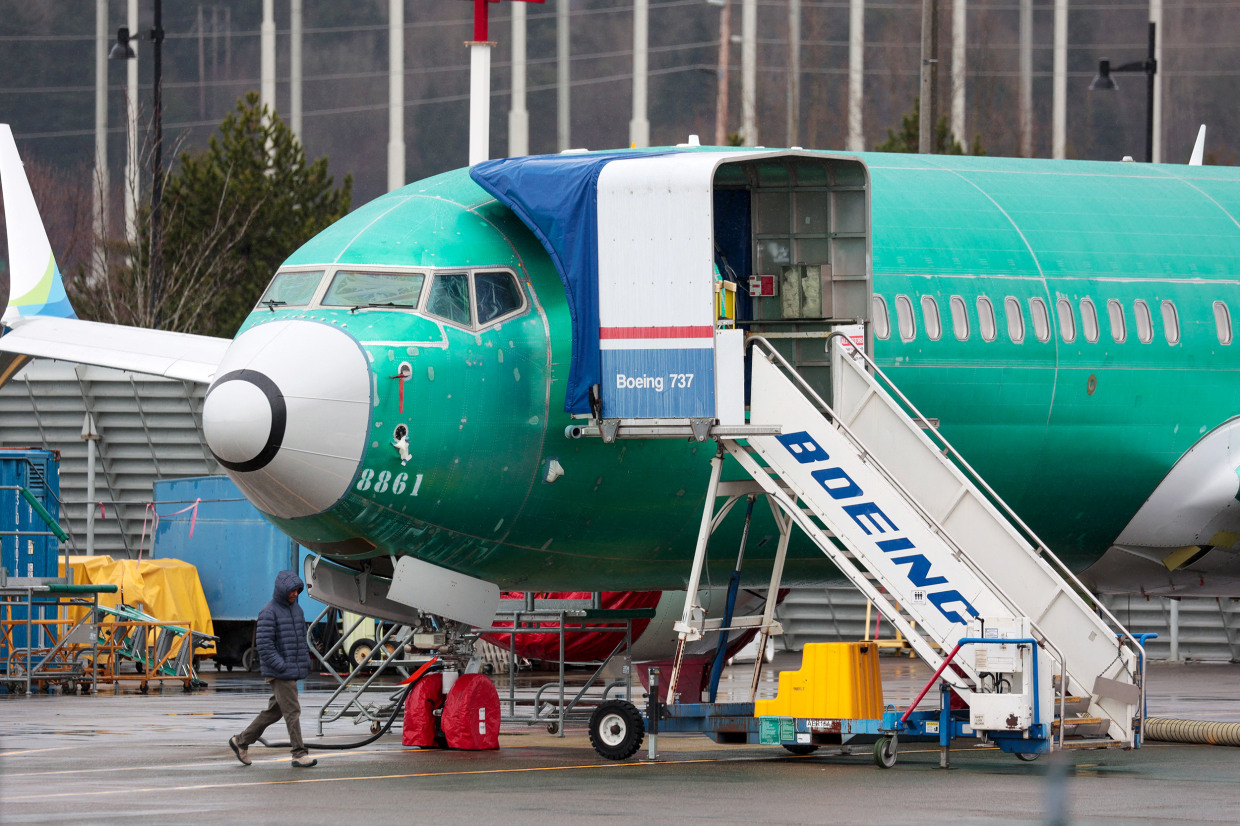Another Boeing Max mishap: NTSB probes 'stuck' rudder pedals on United Airlines flight to New Jersey
UAL Flight 1539 from the Bahamas to New Jersey experienced stuck rudder pedals during a landing rollout on Feb. 6. The plane was ultimately able to taxi safely.
By Marlene Lenthang and Jay BlackmanMarch 7, 2024, 2:03 PM EST / Updated March 7, 2024, 2:18 PM EST

An investigation is underway into a Boeing-manufactured United Airlines plane that experienced “stuck” rudder pedals during a landing rollout last month.
Flight 1539, which had flown from Nassau, Bahamas, experienced the mishap after touching down at Newark Liberty International Airport in New Jersey on Feb. 6, according to a National Transportation Safety Board preliminary report released Thursday.
The captain of the Boeing 737-8 aircraft reported that during the landing rollout, which occurs after touchdown and before the plane slows to taxi speed, the rudder pedals did not respond to the application of foot pressure while there was an attempt to “maintain the runway centerline,” the report said.
Instead, the pedals were “stuck” in their neutral position.
“The captain used the nose wheel steering tiller to keep the airplane near the runway centerline while slowing to a safe taxi speed before exiting the runway onto a high-speed turn-off,” the report said.
During the high-speed turnoff, the captain asked the first officer to check his rudder pedals and he reported the same issue. Shortly after that, the rudder pedals began to operate normally, the report said.
The aircraft, carrying 155 passengers and 6 crew members, was able to park safely. No one was injured.
The flight crew then notified United Airlines maintenance of the flight control malfunction and the plane was removed from service for maintenance and troubleshooting.
A review of the flight’s data recorder corroborated the pilot’s account of what happened, and showed that the rudder surface position remained near its neutral position during the landing and rollout, even though the force inputs to the rudder pedals were increasing, the report said.
The data showed that about 30 seconds after touchdown, a “significant pedal force input was observed along with corresponding rudder surface movement. Afterward, the rudder pedals and rudder surface began moving as commanded and continued to function normally for the remainder of the taxi.”
Three days later, on Feb. 9, United conducted a test flight on the event airplane at Newark, and “was able to duplicate the reported rudder system malfunction.”
The NTSB was notified about the flight control issue after the flight test and an incident investigation was opened with the involvement of the Federal Aviation Administration, Boeing and Collins Aerospace.
A post-incident inspection of the rudder control system “found no obvious malfunctions with the system.” When some rudder system components were removed, United conducted a second test flight and found that the rudder control system operated normally.
The investigation is ongoing.
Boeing said in a statement Thursday: “We worked closely with United Airlines to diagnose the rudder response issue observed during two 737-8 flights in early February. With coordination with United, the issue was successfully resolved with the replacement of three parts and the airplane returned to service last month.”
The February incident was the only report of this rudder pedal issue Boeing received in the 737 MAX fleet, the company said. The rudder pedal system on the aircraft is identical to that of the 737 NG. Boeing said it was aware of two similar past occurrences on the 737 NG model, both in 2019, which were resolved with component replacements in both cases.
United Airlines said Thursday, “We’ll continue to work with Boeing, the NTSB and the FAA on next steps for these aircraft.”
The airline said the parts involved in the rudder pedal issue are related to a landing feature that was not selected by United and are only present on nine United aircraft that were originally built for other airlines. Those parts have since been replaced.

